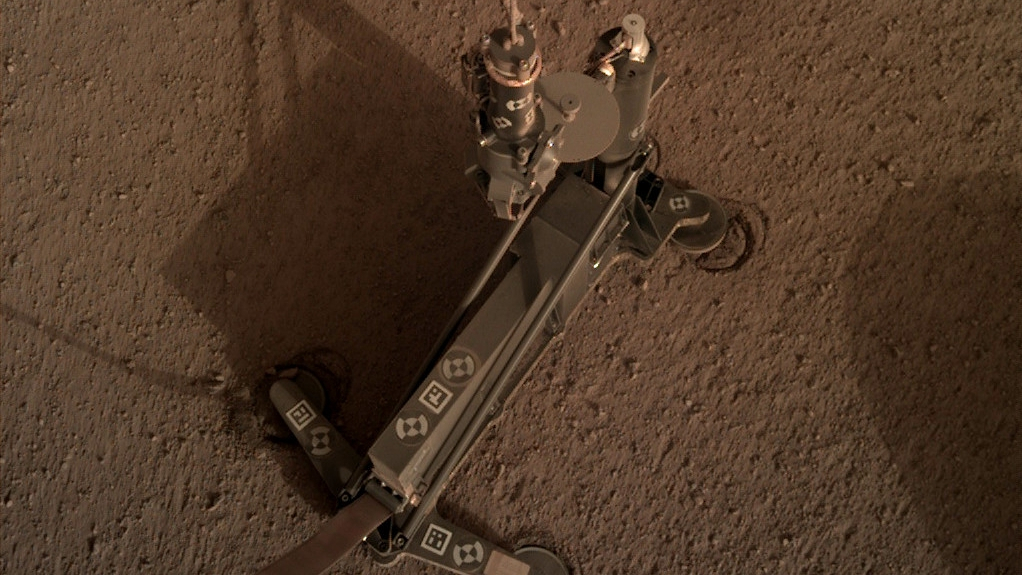
Technology
21:29, 07-Jun-2019
NASA's InSight team makes new attempt to help heat probe working
CGTN

Scientists and engineers have worked out a new plan for getting NASA InSight lander's heat probe digging again on Mars, according to the latest release of NASA's Jet Propulsion Laboratory (JPL).
The heat probe, also known as the "mole," is designed to dig below the Martian surface and measure the heat coming from inside the Red Planet.
As part of the heat probe, the mole is a self-hammering spike which will dig as much as five meters below the surface and record the temperature of Mars.
The mole has not been able to dig deeper than about 30 cm below the Martian surface since February 28, 2019.
In the last several months, scientists conducted testing and analysis to understand what prevented the mole from digging.
They believe the most likely cause is an unexpected lack of friction in the soil around InSight – something very different from soil seen on other parts of Mars. Without enough friction, the mole will bounce in place, according to JPL.
The device's support structure blocks the lander's cameras from viewing the mole, so the team plans to use InSight's robotic arm to lift the structure out of the way. Depending on what they see, the team might use InSight's robotic arm to help the mole further later this summer.
"Engineers have been working hard to assess the problem," said Lori Glaze, director of NASA's Planetary Science Division. "Moving the support structure will help them gather more information and try at least one possible solution."
The lifting sequence will begin in late June, with the arm grasping the support structure. Over the course of a week, the arm will lift the structure in three steps, taking images and returning them so that engineers can make sure the mole is not being pulled out of the ground while the structure is moved, according to JPL.
InSight landed safely on Mars on November 26 last year, kicking off a two-year mission to explore the deep interior of the Red Planet.
The heat probe is one of the three instruments that InSight brought to Mars. The other two are the Seismic Experiment for Interior Structure instrument for recording "Marsquakes," and the Rotation and Interior Structure Experiment instrument for collecting preliminary data on the planet's core.
(Top image: The support structure of the Heat Flow and Physical Properties Package instrument moved slightly during hammering, as indicated by the circular "footprints" around the instrument's footpads. /Credit: NASA/JPL-Caltech)
Source(s): Xinhua News Agency

SITEMAP
Copyright © 2018 CGTN. Beijing ICP prepared NO.16065310-3
Copyright © 2018 CGTN. Beijing ICP prepared NO.16065310-3